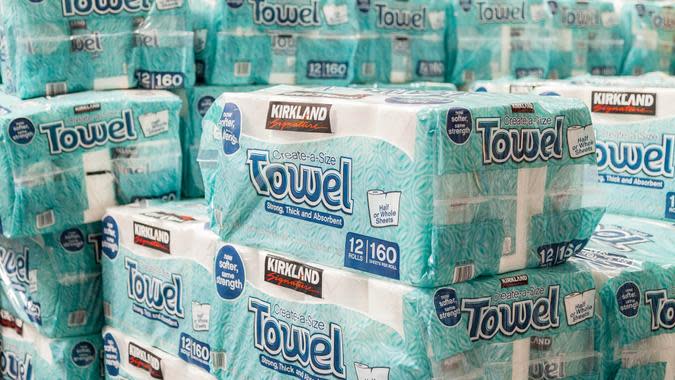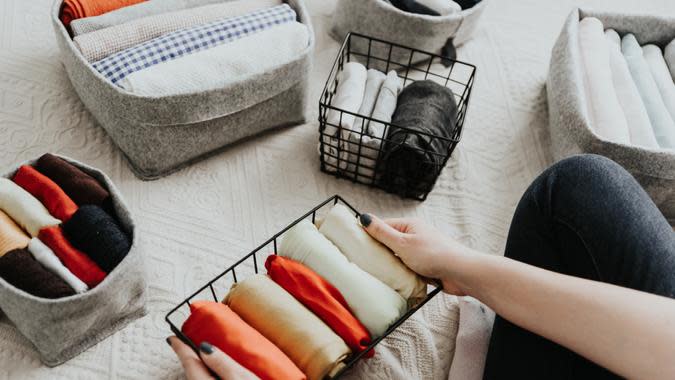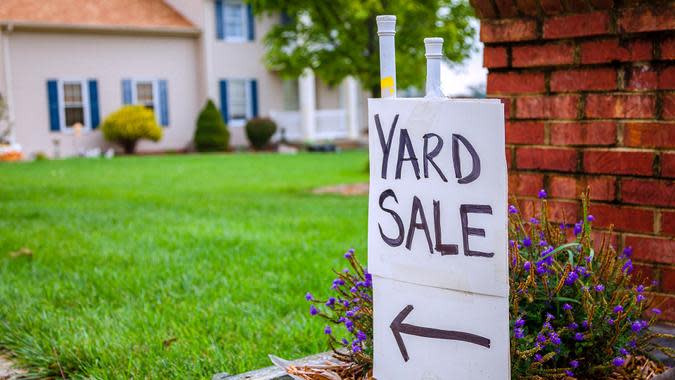8 Simple Ways To Cut Costs Without Sacrificing Quality

Being frugal doesn’t mean skimping out on everything. In fact, there are plenty of ways to scale back on your spending without sacrificing things you enjoy.
Read Next: I’m a Frugal Shopper: 4 Items I Always Buy Secondhand To Save Money
Try This: How To Get $340 Per Year in Cash Back on Gas and Other Things You Already Buy
Adopting a more thrifty mindset with your money can help you save up quickly. But it also helps you shift your mindset and start building smart money habits that can carry forward in the future. In many ways, it’s less about slashing things out of your budget and instead being intentional about the financial decisions you make.
Here are eight simple ways to maximize your savings without minimizing the quality of your life.

Shop in Bulk
You often buy the same products week after week — why not just buy them in bulk? In most cases, you’ll save money, and you’re not sacrificing any quality or even cutting back on any of the products you use. This is especially the case for staples like canned goods and toiletries.
Many large grocery wholesalers and drugstores carry their own generic or store-brand products, which are often lower priced yet very similar in quality. It’s natural to think that just because a product is more expensive, it’s higher quality, but this often isn’t the case. Many name-brand products charge higher prices to cover marketing and branding costs – while their product is almost exactly the same as the generic brand next to it on the shelf.
Keep in mind that if you are buying in bulk, you need to have a plan to properly store the items and make sure you’ll actually use them up. You won’t be saving money if you’re not consuming the extra product you bought.
Learn More: 5 Unnecessary Bills You Should Stop Paying in 2024
Trending Now: 7 Appliances Frugal Homeowners Steer Clear Of

Cook More at Home
Frequently dining out can have a major impact on your budget – in most cases, it’s much cheaper to cook at home. Buying your groceries in bulk and preparing your meals in batches can often save you money.
If you’re just getting started, the food quality may not be restaurant-grade at first, but over time, you can learn to cook delicious (and often healthier) meals at home.
Like buying in bulk, it’s important to have a plan to ensure the food you’re buying and cooking isn’t going to waste. Plan your meals ahead of time and make a grocery list to ensure you’re not buying food you won’t use. This also helps avoid impulse purchases.
Check Out: 5 Frugal Habits of Mark Cuban

Embrace Minimalism
Getting wrapped up in the latest fashion trend or interior design fad is easy. Social media especially can encourage overconsumption, which in turn drives overspending. In many cases, you may wind up buying a trendy item that’s poorer quality.
Now’s a great time to adopt a mindset shift around consumption. Try to focus on buying fewer things that bring you joy. And when you do decide to buy, focus on quality over quantity. Quality items tend to last longer — so while the price tag may be higher, you’ll save money in the long run because you won’t need to buy replacements.

Use Coupons or Cashback Apps
Coupons can give discounts on items you were already going to buy — so there is no need to purchase lower-quality items. Cashback apps are essentially digital coupons, giving you rebates on certain online purchases.
Both of these tactics are a no-brainer when it comes to shopping. They’ll often give you money off your purchases without much extra work on your part.
If you’re a regular shopper at a specific retailer, see if they offer loyalty programs or in-store discounts. That way, you can rack up additional savings on your regular purchases.

Consolidate Your Cable and Streaming Subscriptions
Embracing frugality doesn’t mean cutting out all the subscriptions in your life. If you enjoy catching up on your favorite shows, keep watching! But you may want to consider taking a closer look at your entertainment subscriptions and identify ones you don’t use often.
Most streaming subscriptions charge a lower monthly cost — but if you have multiple, those charges can add up and crunch your budget. Chances are, there’s at least one subscription you could cancel, which can add up to substantial savings over the course of the year. And you likely won’t even miss it.
If you have cable, consider bundling your internet and cable together. This can help you save costs over time without cutting back on your shows and services.
Good To Know: 6 Valuable Everyday Items You Should Never Throw Away

Try Your Hand at DIY
While there are some projects where you need to call in the professionals for smaller home improvement projects or repairs, consider trying to make the fix yourself.
Not only will you build a new skill, but you can save big on labor costs without giving up the quality of the finished project.
The same goes for broken electronics or damaged clothes. Learning to sew yourself or make minor fixes can save you money in the long run. It also extends the life of many of your items, helping you avoid buying replacements.

Utilize Energy-Saving Habits
There’s a good chance your home is raising energy costs, and you don’t even know it.
Even when some electronics or appliances are turned off, it can suck up lots of energy. Consider unplugging your devices when they’re not in use, including switching off or unplugging power strips. The same goes for turning off room lights when not in use.
You may also want to consider upgrading your appliances to energy-efficient ones to improve the energy use in your home, saving you money in the long run.

Buy Secondhand
Buying used items doesn’t mean they’re lower quality. Secondhand items are often high-quality products that have stood the test of time. Plus, they’re often much more affordable.
Consider looking at online marketplaces, thrift stores, garage sales, and estate sales. While it may take some extra work on your part, you’ll sometimes find almost brand-new items at a fraction of the cost.
While being frugal does often mean making some sacrifices, you don’t need to cut back on everything you enjoy just to save money. While financial freedom is important, so is enjoying life. It’s important to balance spending on things you love and avoid overspending. But it’s definitely possible.
More From GOBankingRates
This article originally appeared on GOBankingRates.com: 8 Simple Ways To Cut Costs Without Sacrificing Quality
